#and that they aren't making any BluRay releases
Text

Mebh and Moll from Wolfwalkers!
#wolfwalkers#cartoon saloon#wolfwalkers mebh#moll mactire#this was SUCH a good film#i am soooo mad that it is behind the Apple paywall#and that they aren't making any BluRay releases#seriously#free the movie!!
57 notes
·
View notes
Text
My absolute favourite thing about returning to this blog after a few years and getting into musical films again is finding out how many of the old ones have been released on Blu-ray in the meantime. There used to be so many movies that I never even attempted to gif because I only had them in potato quality. That’s still the case for some (especially if they don’t star one of the major performers) but... The Pirate! For Me and My Gal! Gosh I’m so happy. Not even sure how much I’ll get back into gif-making because I don’t have much time but even just rewatching these movies in good quality is such a different experience altogether. Anyway, just a random observation haha.
#i very definitely feel like making gifsets of a bunch of movies now#maybe i'll even be taking requests#gawd i'm excited#😭#what high res can do to a b****#(granted i'm happy to find some movies at all and i've got some truly obscure ones on my wish list)#(so watching them in any quality is better than none obviously)#the potatoest of all potato qualities that i recently came across was what's cookin (1942)#a movie starring donald o'connor and the andrews sisters and a few others who aren't exactly nobodies#but if it took this long for a judy garland movie like for me and my gal to get a bluray release...#well i'm certainly more hopeful re: restorations than i was even just 3-4 years ago#physical media >>>>#(like yeah it's nice if the movies are on streaming tho they usually aren't and i'm not in the US so that's another complication)#(but i put my bluray collection of old movies in my bookshelf next to my book collection and i don't get how ppl don't get the appeal)#(streaming is convenient and i use it a lot but some things you just want to own and know you'll have access to no matter what happens)#ANYWAY
12 notes
·
View notes
Text
So, over the next few days I plan on archiving some older reviews to have them available here. These are going to be selections of my favorite reviews and by extension, some of my favorite pieces of art and media. First up is my favorite Showa Ultra: Ultraseven.
The review was originally written Dec. 27th 2019 and is presented as is, with some exceptions to the images used due to limitations and such. I'll also be cutting the presentation section that went over the case, discs, and episode guide because I don't really think it matters much.

Well now, this was a surprise even to me. I didn't expect to be reviewing Ultraseven this soon, but I received a Christmas present from my lovely friend, Rosy.
This is one I've been looking forward to a lot- as Seven is a fantastic series with a notable reputation for being among the best. However there's never been a particularly good release of the show outside Japan, with the Shout Bluray A:Not being a proper transfer due to those shady as fuck dealings with Chiyao. and B: Having questionable subtitles.
But now, just like with Ultraman, we can finally have a proper release with approval from Tsuburaya.
One interesting thing to note about the series before going in is that this did not start off as another Ultra show, that happened very late and lead to some interesting tidbits that you'll notice throughout the review. It's also worth noting that even after becoming an Ultra series it was not treated as a sequel to the original. There's no mention of Ultraman, the SSSP, past monster etc. The closest connection is that there are references to the M78 Nebula. Otherwise this was originally a stand alone series.
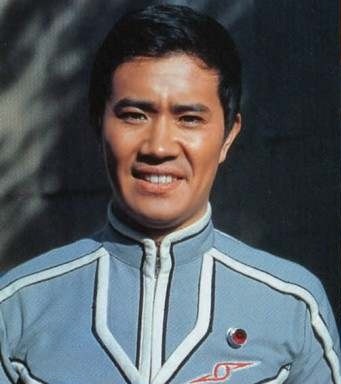
Our primary protagonist this go 'round is Dan Moroboshi. Right from the start Dan is very different than Hayata. Rather than already being a member of the primary defense force of the show, he presents himself as a wander and ends up joining after providing useful information and assisting with an alien threat. Dan also isn't a host to Seven the way Hayata was to Ultraman, he's just Ultraseven in disguise. This also means that any injuries Seven suffers also gets reflected upon Dan.

Unlike his predecessor, Dan has access to and makes liberal use of powers in his human guise. X-ray vision, the ability to see things that are invisible, keen hearing etc. He's also very observant of his surroundings, similar to an amateur detective in some respects- noticing when a things are out of place. We hear his inner monologues as he pieces things together in his head or struggles in various scenarios. His alien knowledge proving most useful.
Over the course of the show more is revealed about Seven and his past. About midway through the series it's shown that when he first came to earth he rescued a rock climber after he cut his own rope to save his partner. Admiring the act, Seven modeled his appearance upon him. We later learn Seven was part of a wider force in the M78 nebula, but he isn't a fighter. This is even reflected in his fighting style which is looser than Ultraman's Greco-Roman wrestling. Seven instead relies best on beam attacks and even telekinesis.
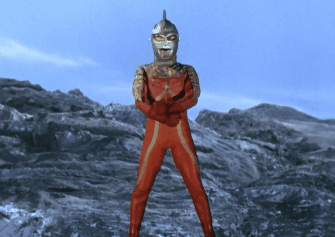
Even the Ultra Rise is very different.
I think the oddest difference is that sometimes there isn't even an Ultra Seven form appearing in some episodes, just Dan. That would almost never happen today- but it's oddly refreshing to see how it all plays out. Granted, that doesn't mean there aren't giant monsters or even monster battles in those episodes. Dan carries several capsules that summon kaiju to battle in his place:

Miclas, Windom and Agira. Usually this happens when the key device used for transforming: the Ultra Eye, is taken, or Dan is in some way incapacitated where he's incapable of transforming.

Even then, episodes that do have Seven don't always feature a giant Ultra Seven. Seven will just be regular sized to fight smaller threats, which is really surreal. Hell, at least two episodes have him shrinking down to a miniature size.
But the single most notable divergence is that Seven doesn't have a time limit like Ultraman did, more so he has an energy limit. The less he does the longer he can maintain his large form, but using various beam attacks will drain it much faster. The Beam lamp upon his head more or less functions the same way as the color timer did, although interestingly enough it's not explained until I believe episode 39 and a few episodes prior is when I first noticed it began blinking after long battles.
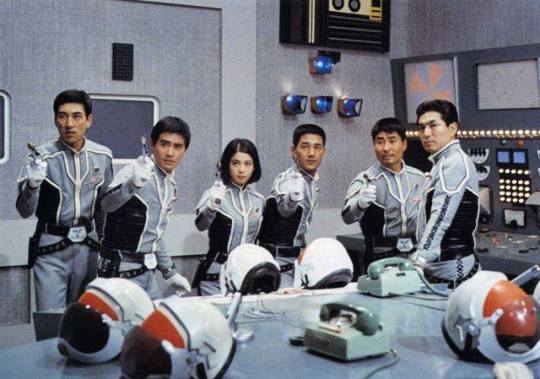
Left to Right: Amagi, Dan, Anne Yuri, Soga, Shigeru Furuhashi, Capt. Kiriyama.
Speaking of notable difference, the main organization that Dan joins, the Terrestrial Defense Force, is a stark contrast to the SSSP. While the SSSP was more scientifically focused- at least in concept, the TDF and by extension their elite sub section: The Ultra Guard, are far more militarized with much larger numbers. While the focus remains on the elite Ultra Guard unite comprised of six members, the show predominately features background characters making the show feel much broader in scope. Here we have various guards, men in uniform, scientists, medical staff, freaking PR people, etc. A number of them are even named.
They even have a major space station with various staff members. It feels like an actual organization- or at least a well funded one.
The cast of characters for the Ultra Guard aren't that much more defined than the SSSP members were and once again I don't have much to say, but they do try by giving some of the characters more focus in certain episodes. Shigeru Furuhash (who is played by Arashi's actor Yoshi Ishii from the original series) serves as this shows comedic relief and gets his own dedicated episode involving a bit of family history with his mother that, at the very least, gives him some backstory. Funny enough the episode that focuses on him is also very dramatic, must be a thing with their comedic characters.
The same can't be said for everyone though. What is there to say about someone like Amagi beyond he's played by Bin Furuya the original Ultraman suit actor? Not much.
What the show does do is a better job with the camaraderie. The characters interact more and in general just have more personality, allowing them to work off of Dan during missions, they're just fairly shallow elsewhere. However one sticks out above the others and that is the Medic on the team; Anne Yuri.
Played by the very lovely Yuriko Hishimi, Anne has a good chemistry with Dan- and I don't mean that in a romantic way. They just function really well in the episodes they're paired together, more so than any other of the cast. She has a magnetically charming personality that simply can't be ignored. I found myself wanting to see more of the character as she had a lot of potential shown off.
Another thing that helps the cast is that the TDF aren't quite as limited as the SSSP were in terms of operations. Ultraman's strongest point plot wise was variety in it's format, which you think would be come more of an issue for a series like Ultra Seven with a much more focused area on defensive measures. However I believe Seven to be even more varied. The show regularly has a number of different conflicts and ways of going about handling them. For a show that has an alien invasion scheme every other episode, it does a great job of never being tiring. Some episodes involve conspiracies like TDF members being assassinated or the UG having to go undercover and trail a suspected Alien like a 60s spy thriller, or there's aliens hypnotizing children to use as soldiers. Of course there's plenty of other none invasion type episodes as well, ranging from experiments gone wrong, strange alien diseases and almost twilight zone-esque otherworldly divergences.

Seven also deals with a lot more morale complexity than it's predecessor did. Whereas in the original Ultraman there would sometimes be episodes which presented a monster in some fashion as to make them sympathetic or that their demise was bittersweet, it never became a major sticking point of morality. Ultra Seven isn't like that, the show will often raise the question if the actions taken are justified, and Seven's own choices sometimes weigh upon him. This was done in an attempt to appeal to an adult audience.
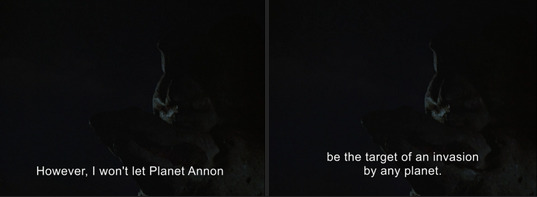
A lot of the conflict comes from ignorance, arrogance, and plain misunderstandings rather than just a desire for conquest. Perhaps a simple satellite being mistaken as a weapon causing a panic, that sort of thing. One most notable of these is episode 6 when a massive space colony looses control of their gravitational force and begins a course towards earth, the alien Pegassa simply assume humans are capable of controlling Earth's own gravitational rotation like they and many other races are with their own planets. But when they learn humanity hasn't advanced that far, they begin thinking of them as simpletons lacking in technology. Faced with the colony colliding with earth, the UG sends a rescue for the Pegassans with an offer to stay until they're capable of building a new home. The Pegassans refuse to answer- perhaps believing humans lack the adequate weapons technology to obliterate their base. Faced with looming impact, the UG has no choice but to destroy the fleet with the inhabitants still on board. The Pegassan species becoming a victim of their own hubris.
While aliens were sometimes used to illustrate humanity's own flaws reflected back, the Ultra Guard themselves were not above being shown as foolish. Tapping into late 60s cold war cynicism, episode 26 has the UG building a new super weapon that's the equivalent of 8,000 H-bombs meant for destroying small planets, with plans for a MK 2 and 3 to go further, which horrifies Dan and leads to a lot of inner conflict with his fellow UG members.
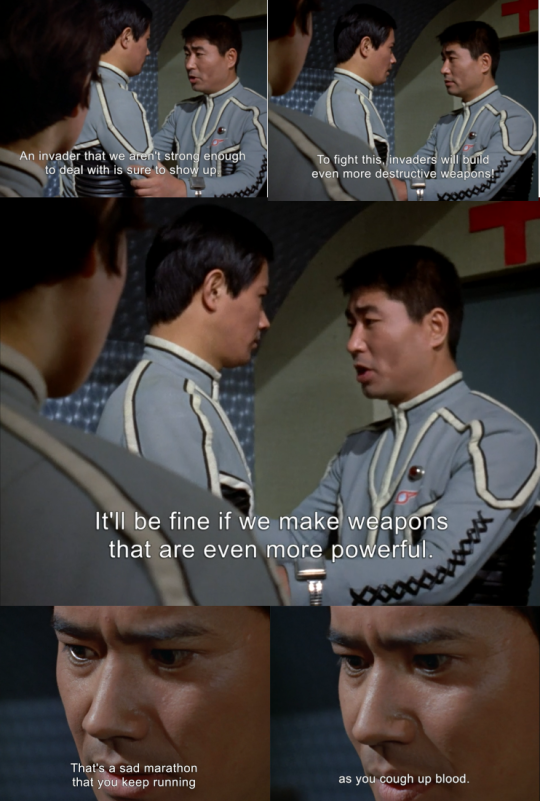
It's not the only time either, and while the UG are of course meant to be a force of good, they're not at all clean.
Intentional or not, it's interesting to note that as soon as a military organization entered the franchise is also when the stories first began having more complexity with the heroes' actions.
Frankly, the TDF engages in much more questionable acts than the SSSP ever did. Sure, they had a few missions that would cause the viewer to raise an eyebrow, such as removing a kaiju from it's natural habitat. But the TDF have quite literally wiped out entire civilizations. Some unavoidable such is with ep. 6 being very grey- but others, not so much. ep. 42 in particular has quite possibly the most horrifying example of this when a race of pre-human ocean dwelling beings called Nonmalt begin retaliating to what they view as an invasion by humans. They're woefully ill-equipped, having only a single monster and one captured British sub as a means of attacking a nearby harbor, the UG having no trouble taking it out. Up to that point it seems like your standard issue group of creatures becoming overzealous and impulsive- they never try to even talk to anyone about coming to an agreement or the fact that they weren't even known about by the humans, they just start making threats immediately. Then things take a turn. After their sub and giant monster are taken out, their underwater city is discovered. The captain of the UG, Kaoru Kiriyama, fearing possible future attacks obliterates the entire city without a second thought.
The show never outright calls it the genocide that it is, but it sure as hell doesn't frame it as good either. Dan and Anne are horrified at the aftermath of the episode, clearly conveying all that needs to be said with their behavior. In the end, the audience is left wondering if the results were necessary and how truly just the UG are when, as far an anyone could tell, it was a defenseless civilian population.
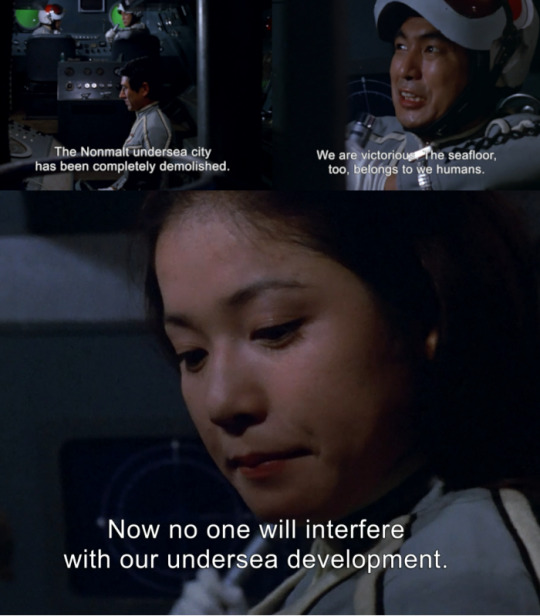
There's a lot one could get into with colonialism with this episode.
The TDF&UG are better equipped and prepared than the SSSP were- and more happy to use their weapons. They're not outright villains and they're certainly shown to have admirable qualities. But they've engaged with reprehensible actions. At the same time I'm not sure if I can say it's a nuanced presentation so much as different writers having very different stories they want to tell and the results being accidental when looked at as a whole. But it is interesting none the less.
Stuff like that makes Seven far more intriguing than the prior series and the show challenges its audience more by having them.

Once again the effects are a fantastic aspect of the show and far more advanced than even Ultraman's sets were in detail. The first episode alone flaunts it's higher production standards with some truly astonishing displays.
Everything just looks a ton better. The Ultra Guard base and gear is drastically more intricate than the SSSP ever was.

The level of detail and scope of these dioramas is gorgeous for the time, and even now in some instances.

The Kaiju and Seijin are of course still fantastically designed and iconic. Eleking, King Joe, Alien Metron, Pegga, Alien Guts, Pandon. Every single one of the above has a great appearance that immediately make an impact.
Seven also experiments a bit by having some none suit creatures, smaller puppets handled by wire work. They… are interesting to mix things up but none stick out to me. I honestly couldn't even recall he first alien in the series. It's clear their bread and butter is still suitmation.
Speaking of the Kaiju, the fights are sometimes shockingly violent. Ultraman had a few that got a little messed up, like ripping Jirass' frill off and taunting him. The second Baltan also got split in half, but was little more graphic than splitting Play-doh. Seven on the other hand can get bloody.
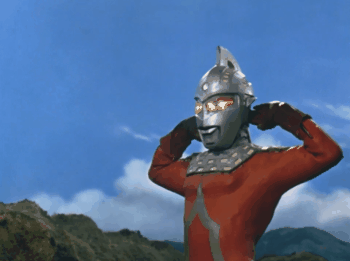
People talk about Leo being violent, but Seven has it's moments.
With all that said, there are however a few oddities with the effects. As lovely as a lot of those sets and creature designs are, there are a couple pieces that feel out of place. One is the backgrounds having noticeable seams. To some extent the original series had this as well but they were more often hard to make out and very few, usually a single vertical line. Seven on the other hand has much larger and extravagant sets and the caveat is noticing when the walls for the background connect since they're much larger.
I'm not entirely sure what it is, but Seven does feature a noticeable uptick in image quality- though it's not a massive leap over the prior series, it is sharper looking and a lot more sticks out because of it. How much they stick out is going to rely on how you view the series. On my computer they're not as bad in most instances, my 42" TV on the other hand was another matter- the backgrounds often appearing as a mass of blocks with thin lines except during wide-shots.

The final issue I believe to be rear projection and it's not just typical rear projecting like when someone is driving in a Bond movie, there's this excessively odd look to the whole thing. It's muddy, there's spots, and there's lines like they either didn't have a single large screen or it was wrinkled to hell. It looks like shit quite frankly and is probably the worst effect I've seen in the Ultra series.
Regardless of a few growing pains, by in large Ultra Seven excels in the visuals and often improves on the ones that don't, with an unfortunate exception to the rear projecting which never really looks any better. Their endeavor with super imposing on the other hand is shockingly impressive. I only saw one egregious example, but every other was stunning for the time.
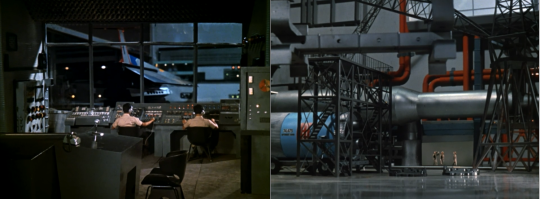
I've seen movies made in the 70s and even 80s that didn't blend stuff this well.
Likewise, the aircraft are more grandiose and as such need more wire. I get the feeling that they had perfected a lot of things with Ultraman and wanted to branch outward to more challenging and by extension more impressive effects, and I appreciate that endeavor. Aircraft move far more fluidly, are more complex and they even have the flagship craft of the series: The Ultra Hawk 1, separate into multiple aircraft and then re-combine, it is marvelous to gander at.
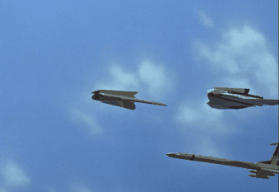
But by far the pinnacle of the visuals is with returning Director Akio Jussoji on a select number of episodes. If there is one defining thing in Ultra Seven from a visual standpoint, I would say it's the gorgeous sun sets and Jissoji is largely responsible for that iconography with his first contribution in episode 8- which is an absolutely gorgeous entry.
He was hardly the only one to use it, as other episodes would often incorporate the orange glow. But there is little doubt in mind that Episode 8 set the precedent. But that is only a tiny part of it, as that episode features so many fantastic scenes and Japanese pop culture owes so much to the cinematography of this Jissoji directed episode in particular.

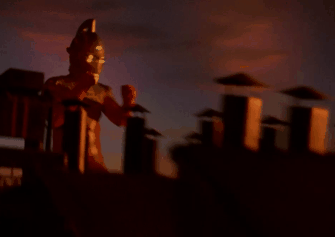
It truly is a collaborative effort. The impressive work of the set builders and the masterful capturing of those sets on film.
Jissoji also wasn't the only one to create some truly fantastic shots. Other directors like Toshihiro Iijima, Toshitsugu Suzuki, and Kazuho Mitsuta also contributed greatly to the series.
There is one more thing, and it's something I wondered a lot about before the set came out and that was if episode 12 would be included. It sadly is not. There's a lot to get into when discussing that infamous episode that I'm not going to get into here. There are plans for the episode to be re-fansubbed so I'll be doing a spotlight on it and talk more about it there. (note from 2023: still waiting)
What I will say is the included episode guide completely avoids talking about it and I find it really strange to not even acknowledge why there's an episode missing. It's even worse on the Moviespree site because it appears as an unavailable episode on the site.
Lastly, I want to end this review on something I wanted to do for Ultraman but never got around to it and decided it wasn't necessary at the time. That is to give recommendations on my favorite episodes with a short synopsis.
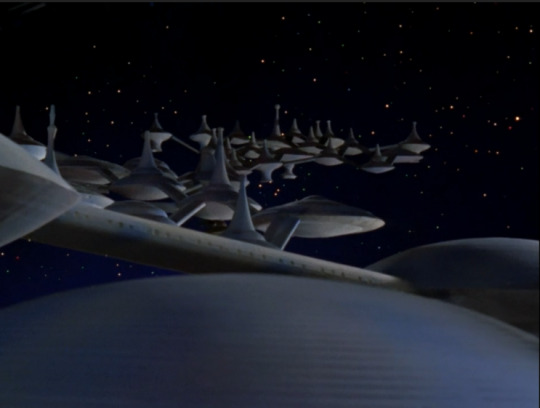
Ep. 6 Dark Zone.
D: Kazuho Mitsuta W:Bunzo Wakatsuki.
This is the one I talked about in the review. It does a good job captivating you with the aliens and their plights, they're fairly friendly but things slowly turn over the course of the episode and the aforementioned hubris kicks in. This is also a good episode with Dan and Anne, showing that they two are willing to bend rules, if a bit too trusting.
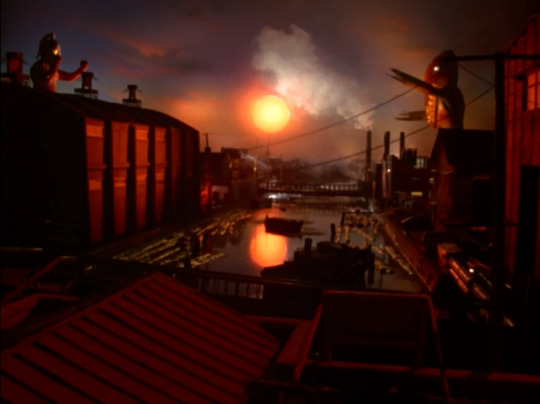
Ep. 8 The Marked Town.
D:Akio Jissoji W:Tetsuo Kinjo
The famous Akio Jissoji directed episode with Alien Metron. I've already shown plenty of screen shots for this one in the review and I think that speaks for itself. The story is also wild with Metron experimenting with how Space Poppies affect humans by lacing cigarettes with the drug. Yeah, it's a space drug trip episode.

Ep 14 & 15 The Ultra Guard Goes West.
D:Kazuho Mitsuta W:Tetsuo Kinjo.
The first two parter of the series and the first time Seven struggles against an enemy: the robotic King Joe, all while the UG work on a new weapon to combat King Joe as he's completely immune to most of their conventional armaments and even Seven.
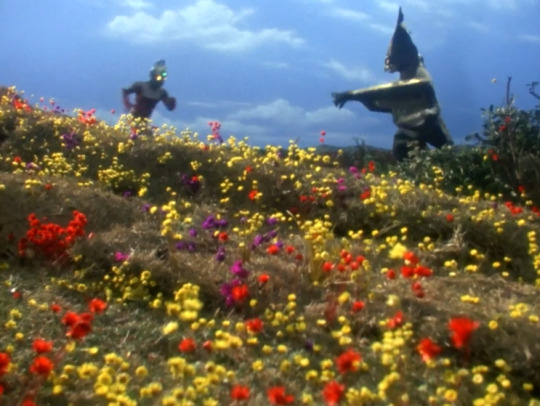
Ep. 26 Super Weapon R1.
D:Toshitsugu Suzuki W:Bunzo Wakatsuki.
This is where that morality really comes into play. Again, another episode I've talked about in the review and it is one I highly recommend. One of the things I didn't mention was the monster, because the test for the new weapon on an uninhabited planet- wasn't. It pretty much causes a Godzilla scenario with a radioactive monster spewing it's toxic fumes all over the place. The horrifying prospect of this is contrasted with some beautiful scenery. I brag on Jissogi a lot, but Toshitsugu Suzuki does a good job in this.
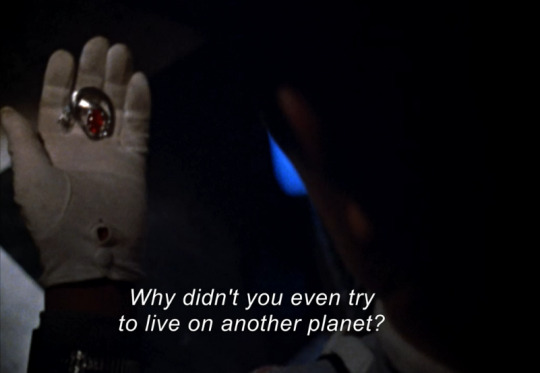
Ep. 37 The Stolen Ultra Eye.
D: Toshitsugu Suzuki W: Shin'ichi Ichikawa
This is a very somber episode. Dan gets his Ultra Eye stolen (No shit) by an alien who then sends a signal for pick up which the UG intercept but allow to go through. A reply comes back from the girl's planet only to reveal they've abandoned her as they launch an interplanetary missile toward earth. This one has a bittersweet ending and examines Seven's more alien nature and his relation to living on earth. Really great shot at the end of the episode of late 60's Japan and all the lights.
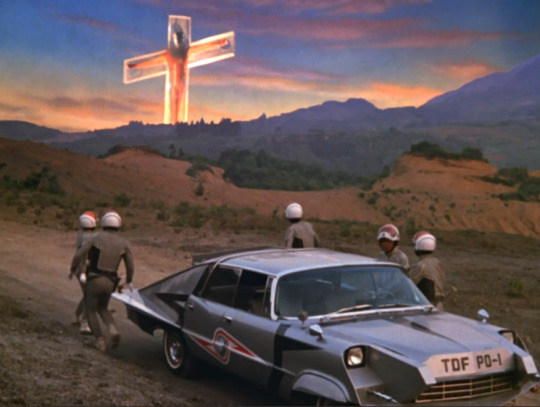
Ep. 39 and 40 The Seven Assassination Plan.
D:Toshihiro Iijima W: Keisuke Fujikawa
Another two-parter. These episodes primarily focus on the TDF and UG, one of the few episodes that really show off their full force against an alien threat. Seven gets captured by one of the most memorable creatures, Alien Guts, and is set to be executed. It's up to the UG to figure out how to save Seven. These episodes almost feel like a finale and probably were written as such before the series got extended.
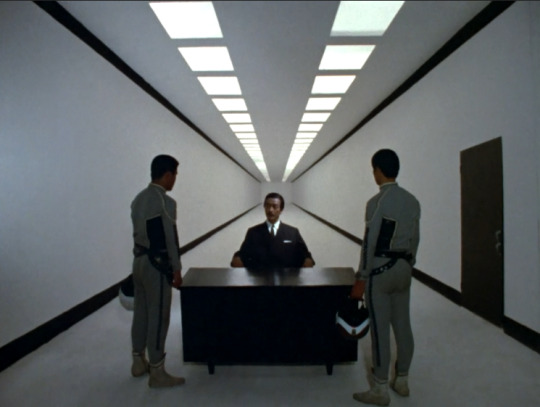
Ep.43 Nightmare of Planet No. 4
D: Akio Jissoji W:Takashi Kawasaki & Shozo Uehara
This episode has Dan and Soga on a journey in a new test rocket, but after being put in the state of deep sleep, the rocket heads off course and is drawn to an earth like planet ruled by Robots. The robots treat the humans of the planet at best as slaves. Segregating them to their own community and disposing of them at a moments notice, even using them as extras in crime shows and using live ammunition, regularly executing them for minor offenses. The entirety of the episode is cold and disturbing. The interior shots are often surreal and plain while outside is nearly lifeless.
At one point Dan and Soga escape the robots by hiding in the back a truck full of fresh human corpses that were shot dead just moments ago.
And yet the end of the episode is also incredibly fun, mainly because Seven gets to go absolutely ape shit, outright growing inside the robots' main HQ and then wrecking everything around it.

This episode hits basically every high point there is for me and very well may be my absolute favorite.
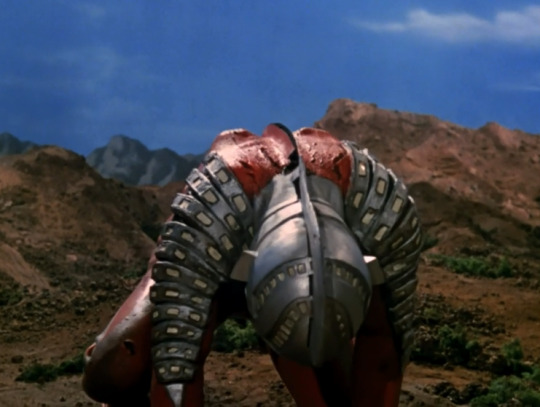
Ep. 48 & 49 The Biggest Invasion in history.
D: Kazuho Mitsuta W: Tetsuo Kinjo
These are the last two episodes of Seven and they're a really great send off. I don't want to get into spoilers too much, but I will say they do a much better job than Ultraman's Finale which frankly felt very flat and rushed. This really shows Dan struggling and going through absolute hell. A nice touch is the Seven Suit is falling apart by this point which actually works really well with the plot. There's a bit of closure with his team as well, something Ultraman never exactly got with the SSSP due to circumstance.
Also, shout outs to Kazuho Mitsuta who directed these two episodes, they contributed greatly to the iconography of this series with that fantastic shot of Dan and Anne.
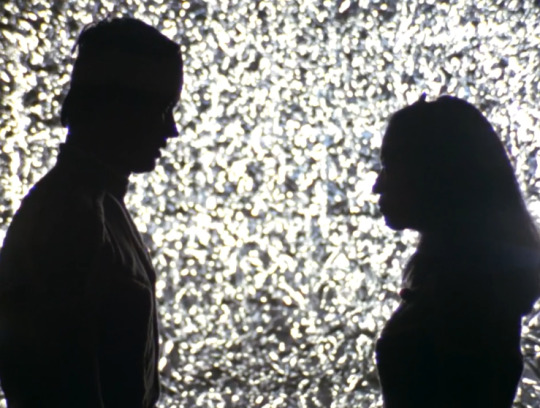
My overall feelings toward Ultraseven is largely similar to Kamen Rider V3. It keeps what worked in the prior series, builds upon that which worked, trims a lot of the fat and adds some new.
Seven keeps enough of the core concepts and ideals of Ultraman to still be viewed as part of the same franchise, yet it's unique status as not initially being developed as part of the franchise or at the very least not a direct continuation. I believe allowed it to have the many differences that assisted in making it feel fresh. Familiar, yet not overly so, different, but not completely alien. A lot of franchises struggle with that balance, either repeating what's already been done or it's so different you can't even recognize it. Seven pulls it off beautifully and in doing so created an incredible nuanced entry. I highly suggest picking this up because it is absolutely one of the very best series and my favorite Showa Ultra.
18 notes
·
View notes
Text
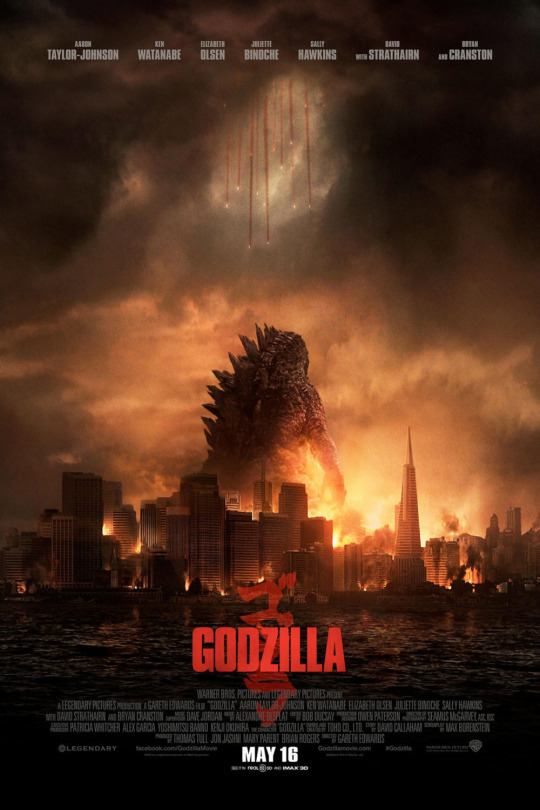
Godzilla (2014)
Watched: 11/04/2023
Format: BluRay
Viewing: Second, I think
Director: Gareth Edwards
In a couple of weeks, Apple+ is dropping their decade-spanning, genre-mixing show about the Monarch organization, which is the group that.... something something.... in a world of giant beasties, based on Godzilla (2014) and the series of attached movies. I've heard where in the movie timeline the show takes place - just after this movie, and it had been a while, so I finally rewatched the first of the Monsterverse films to remind myself what the hell happens in the flick.
I remember going into Godzilla (2014) with some trepidation. The last American-made Godzilla movie I'd seen was the 1998 trainwreck that just piled on all the worst habits of 1990's-era blockbuster entertainment, and then curb-stomped you with them.*
The trailers for the 2014 edition certainly looked cool, but the fact is that at the time of the film's release, Hollywood was doing this thing where they would come up with cool stuff for trailers and then maybe make a movie that tied those scenes and lines together.
It was promising a movie for all-ages, including adults - casting thinking-person's stars like Bryan Cranston, Juliet Binoche, Ken Watanabe, David Strathairn and Sally Hawkins (a curious trend that has continued through Godzilla v. Kong with Rebecca Hall as our lead). So it was literally *buying* gravitas with the casting choices. Which was maybe needed after the 1998 debacle.
Leaving the movie, I remember a vague sense of disappointment, but wasn't blogging at the time, so there's no record of what I was thinking. In the 9 years since I've re-watched the movie, I'd kind of forgotten what the deal was. Certainly I remembered them bumping off Binoche in the film's first five minutes, and that Cranston similarly exits the film in the first act, when I thought he was going to be our lead.
Instead, we are handed Aaron Taylor-Johnson in a thankless, vague and personality-free role of "Ford Brody" - a US soldier of some sort (I'm pretty sure I heard him say "navy" at some point, but that seemed weird) who specializes in defusing bombs. He's supposedly partnered with Elizabeth Olsen as his wife, Elle, but the two get maybe three minutes together in the whole film - a film that depends entirely on you caring about Ford's return to his family (why he leaves actually makes zero sense, but whatever). At no point will the audience care about this other than "oh, I guess that's why he's there/ doing that".
The problem with all that all-star casting is that in 2014, neither Olsen nor Taylor-Johnson were the people many of us showed up to see. So when those stars you came to see start getting bumped off, or get relegated to exposition-spouting background characters (sorry, Sally Hawkins), you aren't really sure why you're supposed to be following the blank-space-of a character in a motorcycle jacket that is Taylor-Johnson's character. You'll want to spend time with literally everyone else on screen.
However, the entire movie is set up - much to my surprise the first time - to be Ford's story. We're intended to find out *why* he's invested in the events, and - because this is an American movie - has a deeply personal stake in what is happening. Which means the first twenty minutes could possibly be lopped off the film and conveyed via two or three lines of dialog. But, instead, we're shown everything, which sets up the audience to care about and to wish to follow entirely the wrong characters.
Once we're in 2014, fortunately, the movie fates place Ford just right in the world, in a series of increasingly unlikely events, to be exactly where he needs to be at any given time to be a part of the movie's globetrotting events. Also, not because he did any work, but happened to overhear something, he's the person with the required knowledge at least once. And we're told he apparently set up a nuclear weapon, but that happened off-screen?
This is as good a segue as any to talk about how you can cast the best actors, get cool-as-hell FX departments, etc... but this is, in fact, a very, very badly written movie.
The scenes that do work are very much written to be teaser trailers and worked backward into the movie. The halo jumping sequence is absolute, illogical nonsense, but looks cool as hell, and may have been what was pitched to execs. Godzilla coming onto the beach in Honolulu, same. But they aren't cohesive as a story, and there's no real characters to get invested in to make you care if the monsters destroy the world or not.
Retro-engineering the movie, given what we know now about Legendary's plans, this is really just all set-up for getting an audience invested in the world that we now refer to as The Monsterverse. The movie cares more about sequels than itself - a problem with a lot of media in a post-Lost world, and misunderstanding how Marvel was working. It wants us to understand that there's an expert agency that looks into Godzilla-type happenings, and - working with the military? sometimes? - takes care of the issues, but is really mostly standing around being very concerned, while also hiding the fact that Godzillas exist. Which seems like a very tall order, indeed.
I'll be honest, I had no memory of Monarch by the the time I saw the sequel, so excellent job, my dudes.
From a story perspective, it's the kind of movie where we find out that the people who have spent 15 years, every day, studying the monster who has taken over a nuclear power plant have somehow learned nothing, pondered nothing, done no basic science, and so it is that Ford Brody has all the info they could ever need as person who showed up on the scene 4 hours ago (and you will also wonder why they didn't just hire Cranston). It's the kind of movie that says "we evacuated a whole small city by pretending there was a nuclear disaster, but we didn't kill the monster in the middle of the evacuated area because we thought that would actually radiate the area everyone already was not living in." Which... amazing logic.
The most baffling decision by the movie is that it's absolutely, deeply against actually caring about why you bought your ticket (to see Godzilla). There are multiple battles between Godzilla and the stupid stink-bug looking MUTOs, and fuck you if you would have liked to have seen those, because this movie is convinced that's like putting the camera on the clouds for several minutes in a movie about people surviving a storm.
But it is not. Our monsters are the main event. I don't care if it's the Rockettes performing while firing muskets into the air while the ghost of George Washington tap dances around - my eyes is going to be drawn to the behemoths destroying city blocks by turning around.
What happened in Hawaii? We had minutes of build up featuring huge set-pieces and POV characters. We get our first glimpses of G himself and his incredibly fat ankles. But when the fight kicks in, it's shown as maybe three shots on a 13" TV in other scenes in Elizabeth Olsen's apartment.
You want to see the rampage through Vegas? Eat my butt. We're showing the aftermath.
You want to see the monsters actually engaging in San Francisco? You're just a fool for thinking that will happen. We will show the humans doing their shit, and cut away just as the monsters engage time and time again. And when we DO finally show it, it will be so dark, you'll be wondering if something went wrong with how you're viewing the movie.
Like, I don't understand how one decides that they're making a movie about gigantic monsters fighting and thinks what we want to see is soldiers planning a parachute jump, not "in addition to" but "instead of" monster fights.
Consequently, the movie is weirdly boring. We're just going from place to place, being denied better characters and dialog while gesturing at who they cast.
I've seen, I believe, all but two Godzilla films (three if you count the one that hasn't been released yet), and I can tell you, no matter how goofy or dumb most of these movies are, they know why you paid your dollars for a seat. So they may be a confusing mess of sub-plots, but they WILL show you Godzilla and an enemy or three mixing it up for long stretches. And they do not think you only need to see glimpses of the monster fights in the background as someone ties their shoes in the foreground.
I may think Skull Island is an affront to the legacy of King Kong, but no one is going to call that movie boring or suggest it under delivers on crazy monster stuff. So someone figured this out.
What I don't get is why they went with *this* design for Godzilla. Why the stumpy avocado look? Look, nothing was going to look worse than the 1998 trainwreck, so by that measure, it's an improvement. My assumption is that Toho doesn't want for US-made Godzilla to look like their Godzilla, but I have no evidence that's true. What I generally believe is that there is science that talks about how animals would be shaped if they scaled up, and the larger an animal gets, the more it has to be shaped wider rather than taller - ie: you get a pyramid at some point. And this is that. But, my guys, this is about an amphibious monster king who shoots atomic rays from his tummy out his mouth, so maybe we go for "cool" instead of "will please my Bio 301 TA".
I guess kids like it, because those toys do move, but I gotta say, I think the Final Wars Godzilla looked rad as hell and would have been nice to see as a CGI adaptation. It's not really til they made adjustments to Avocadozilla in Gozilla v Kong that I was onboard with this design.
But, maybe the greatest bit to make you wonder what the hell was going on at Legendary when making this movie occurs in the he final moments.
After Godzilla has managed to help level Honolulu and most of San Francisco, he needs a nap, and takes one in the middle of the city, waiting a couple of days before he wakes up again, fresh as a daisy. As he's leaving, the TV screens have "Godzilla, King of the Monsters: Our Savior?" on the chyron.
That's like.... one day you're at home and two mountain lions and a bear enter your home, destroying pretty much everything you own and killing your family dog. The bear manages to finish off the mountain lions and then naps for a bit on your couch. I really don't think you're looking at that bear and thinking "wow, he really did it. He really helped me out."
I haven't even got into how the 25-story-tall monsters keep sneaking around silently and keep surprising our heroes. Nor why the answer of the military to 25 story monsters is "send in foot soldiers with machine guns" instead of "pound these things with our gigantic cannons mounted on battleships that can hit a target miles away".
The movie finally, finally remembers in the last ten minutes that you can do more with a character in a movie than have them either deliver information or look bewildered when we see Ford decide "if Godzilla can go above and beyond, so, too, can I!" using, like, legit film language. The moment is the only one to convey that anyone would see Godzilla as anything other than a pants-dumping terror instigator, so it does help the point of "our hero?" but it's also entirely singular to the experience of Ford and like 2 other people.
When given an opportunity for real, human moments - like Ford being reunited with his child - we just don't show it. It happens off screen, and that may be the most telling moment for how this movie sees character, story, emotional beats, etc... We don't care. All we care about is making sure the audience has seen Godzilla, knows he's there to fight monsters, monsters don't give a shit about humans, and that Monarch is there to look concerned and wear their IDs on lanyards when the monsters show up.
It's just such a weird movie.
One could easily say "you dismiss all of the nonsense in the Japanese films" - but, two things. (1) It's largely arguable that the movies after 1954 are for pre-teens, and not pulling in big-name stars to sell us on the idea that this is a movie is something not dumb. And (2) Their storylines may be nonsense, but the plots, no matter how insane, have an internal logic that holds. This movie can't even do that. Nothing really makes any sense, it all just keeps unfolding and hoping you don't notice "hey, this is dumb as hell". Unfortunately, that requires actually seeing the monsters, to which this movie stands in violent opposition.
What do I like?
Well, it's nice to see the talent assembled in front of the camera, I guess. I wish they'd been given literally anything to do but exposit. The effects are ok, and the final monster fight - what you can see of it - is nicely framed in bits like a classic Godzilla film, pulling back to let you see how tiny the city is against the creatures. I don't mind the insertion of Monarch into the movie as a concept - I wish they'd explained in the slightest what they were, why and what they hoped to do. It's a nice hardware porn movie, with jets, helicopters, battleships, etc... It's nice to see a pre-super-famous Elizabeth Olsen. She's as good as one could hope for given her five lines in the movie.
But for the most part, the movie was pretty much how I remembered.
Kids seemed to like it, and everyone has done well selling the toys (which may also be why the Godzilla in this movie looks how it does, so Bandai doesn't get a cut). But kids don't give a shit who Juliet Binoche and Ken Watanabe are, so. For the teen to 20-somethings, it did fine, but I was surprised it launched a franchise. There's a lot about movies and budgets and who gets paid that I don't understand. But I don't know anyone who *loves* this movie. It just kind of exists.
To their credit, these movies do seem to be getting better with each movie, but what a weird way to workshop concepts already sorted out by our friends in Japan.
*I saw the movie twice in theaters at the time - once to see it, and a second time to take my brother so he could see the awfulness with his own eyes
3 notes
·
View notes